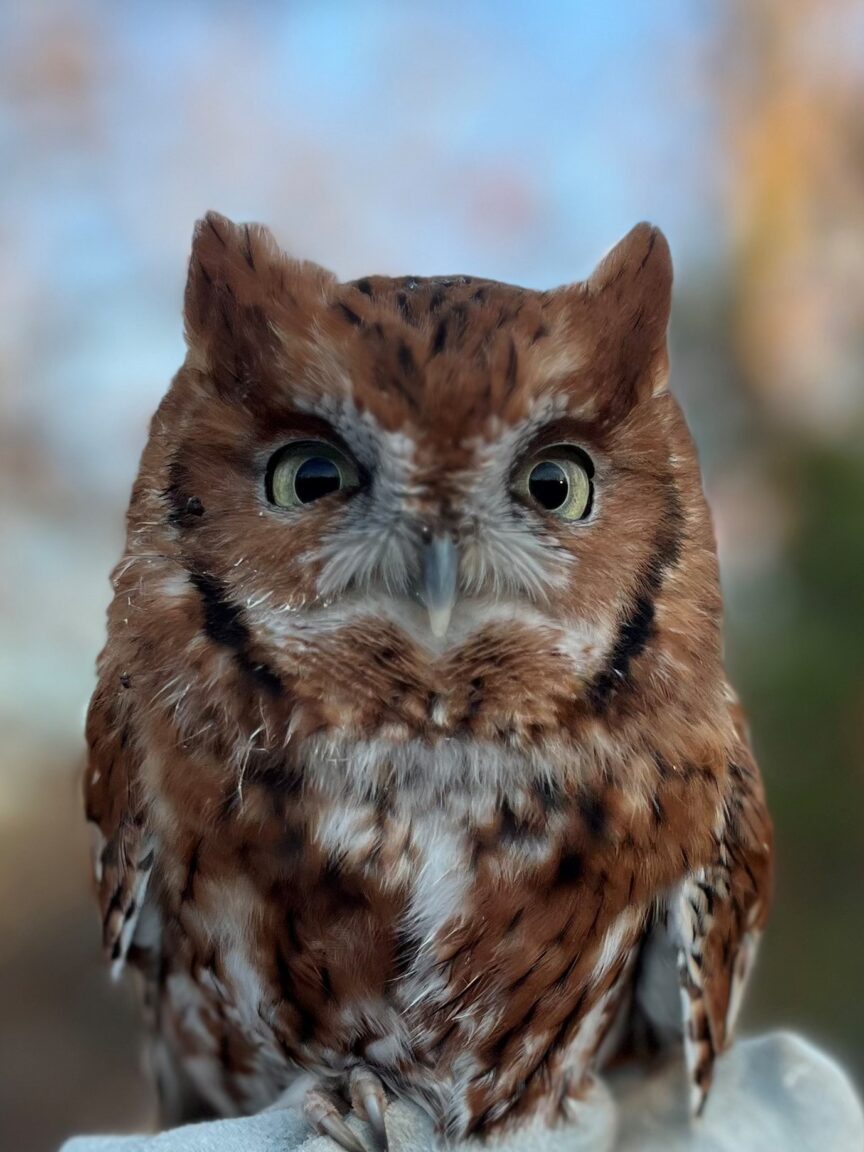Birds of Prey

Birds of prey are also called raptors and are magnificent animals. They come in various sizes in our area from the smallest Saw-Whet Owl to the largest, the Bald Eagle which is spotted periodically in East Hampton and Southampton. Raptors hunt for live prey. For example, Barn Owls hunt for mice and rats while the American Kestrel will hunt for birds and crickets. The Red Tailed Hawk will hunt for animals as large as squirrels. This, of course, is only a partial list of prey these animals hunt for.
Rescue Tips:
Injured or Sick Adults
Birds of prey use their talons (long nails on their feet) as a defense. Large birds of prey can inflict a substantial laceration so use care if rescuing! These birds often lay on their backs and wave their talons in defense. If you are not comfortable, please contact us.
Use gloves and a large towel. Prepare a large cardboard box with a towel on the bottom and adequate ventilation. Try to get the bird in a corner situation (fence, hedge, building). The bird may lay on its back and hold its talons up in the air. Cover the bird with the towel. Using gloves, lift the bird and place into the box. The talons should not go through gloves and towel.
Orphaned Birds of Prey
Birds of prey are rarely orphaned since both parents care for the young. Remember it is an old wives tale that if you touch a baby bird, the parents will reject it. Ask the following questions:
Is the baby injured?
Was the baby in the mouth of a cat?
If the answer is no to both of these questions, re-nest the baby as follows:
Does the bird have feathers and able to stand on its own? If yes, the baby is most likely a “branchling,” having just left the nest and is capable of hopping from branch to branch. Using gloves and a light towel, gently cover the bird and place it in a branch of the nearest tree. Leave the area, but check again in a few hours.
If the bird has down feathers or is naked, place the bird in a box with a hot water bottle or heating pad set on low and contact us for advice on renesting. Some birds of prey nest in cavities and some make a nest in the branches of trees. It is important to identify the species before trying to renest.
Owls Trapped in a Fireplace
How long has the bird been in the fireplace? If longer than a day, contact us for rescue. If not, close off all pathways to other parts of the house. If there is a door or window nearby, open it and darken all other windows. Wearing gardening gloves, with a small towel in one hand, open the door to the fireplace. Gently grasp the bird and release it outside. If the bird escapes into the room, it should fly out a nearby open door or window.
Hawks Preying on Songbirds at Feeders
While hawks preying on songbirds is a natural occurrence, it is an unfair advantage for the hawk since the bird feeder is acting as bait. Stop feeding the birds for several days. The hawk will eventually give up and leave the area.
